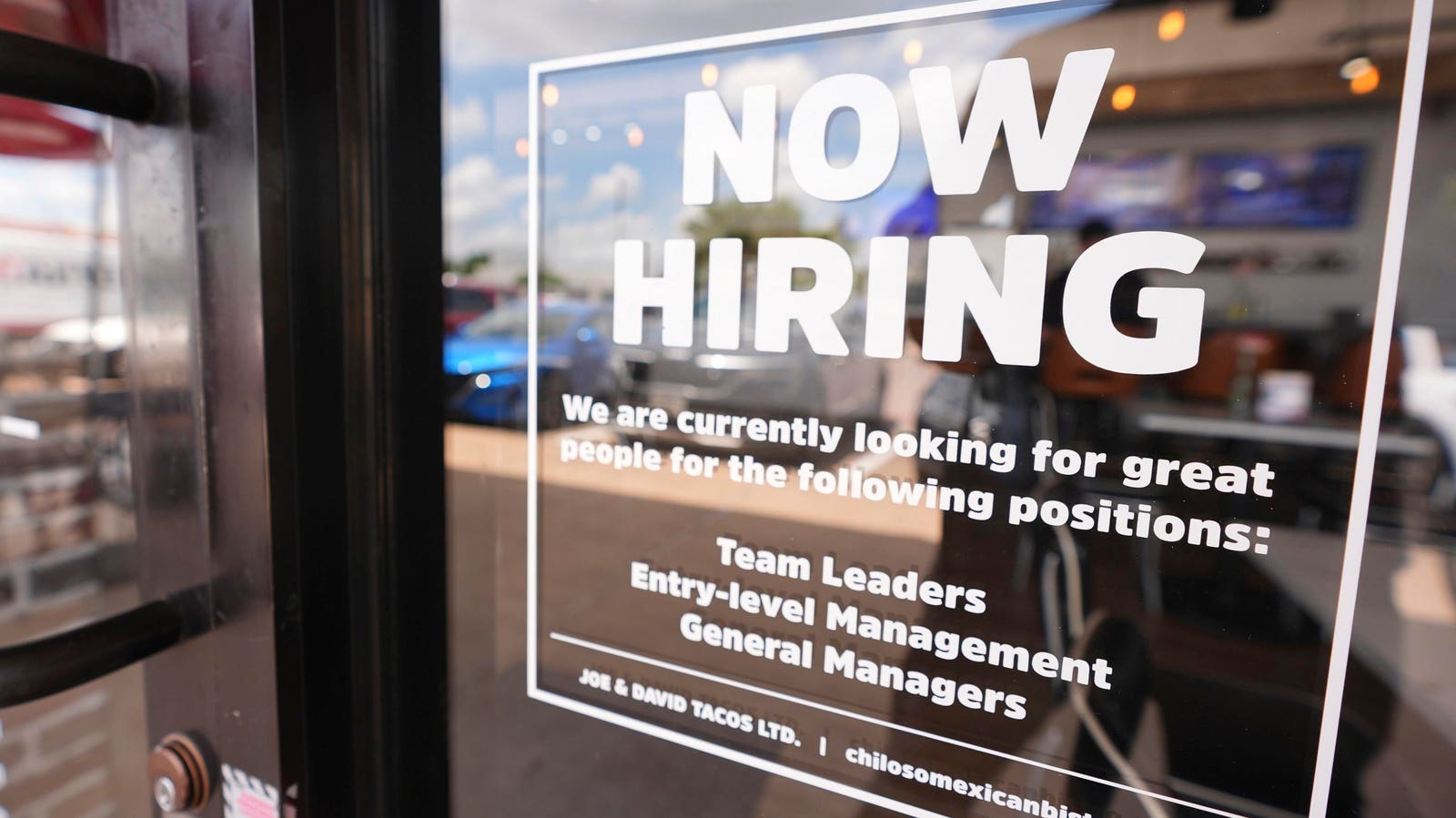Topline
The U.S. job market appeared to lose steam last month, according to Labor Department data released Friday, as the Federal Reserve warned the effects of President Donald Trump’s tariffs on the economy have yet to be seen.
Hiring slowed sharply in July as unemployment rose slightly to 4.2%.
Copyright 2025 The Associated Press. All rights reserved.Key Facts
The unemployment rate rose slightly to 4.2% in July, in line with analyst forecasts according to FactSet.
About 73,000 nonfarm jobs were added last month, below economists’ projections of 115,000 and less than half the 147,000 added in June.
Friday’s data follows a report earlier this week from the career services firm Challenger, Gray & Christmas, which noted private and public employers cut 62,000 jobs in July, marking a 140% spike over July 2024 after the Department of Government Efficiency slashed federal agencies and grants, and as more companies implemented AI.
Surprising Fact
An average of 130,000 jobs added per month this year is the weakest since the January to June period in 2010, as the U.S. economy recovered from the Great Recession. An average of 168,000 jobs were added per month last year, compared to the roughly 400,000-per-month average from 2021 through 2023 as businesses recovered from COVID-19 lockdowns.
How Have Trump’s Tariffs Impacted Job Openings?
It’s not immediately clear whether Trump’s tariffs have directly affected the number of jobs available, though retail and automotive sectors have recorded an increase in layoffs. The retail market cut nearly 80,500 jobs in July, a year-over-year increase of 249%, according to the Challenger report, as companies cited tariffs, inflation and economic uncertainty.
Jobs Report Heightens Tension For Possible Interest Rate Cut
Following the Federal Reserve’s policymaking meeting in July, during which the agency opted to hold interest rates between 4.25% and 4.5%, Fed Chair Jerome Powell noted there were several economic reports ahead before the Fed considers a rate easement, including Friday’s labor report. Powell said the unemployment rate would be a focus, as the Fed operates on a dual mandate of setting rates to keep inflation and unemployment low, though he warned about the looming impacts of Trump’s tariffs, as there is a “long way to go” before the long-term effects of those are known. Tariff costs are starting to raise consumer prices, Powell said Wednesday, and “we expect to see more of that.” The Fed’s policymaking panel will meet again on Sept. 17, and there’s about 39% odds the agency opts for a quarter-point reduction, according to CME’s FedWatch. There’s a higher chance during its Oct. 29 meeting, at 61.3% odds.
Key Background
Friday’s jobs report follows an optimistic update on private payrolls earlier this week. ADP reported an increase of 104,000 private jobs in July, reversing a loss of 23,000 in June. The figure came in well above economist forecasts for an increase of 65,000, according to a Dow Jones consensus. Nela Richardson, ADP’s chief economist, said the firm’s report was “broadly indicative of a healthy economy,” noting, “Employers have grown more optimistic that consumers, the backbone of the economy, will remain resilient.” June’s report was far worse than expected, after analysts projected a monthly increase of 100,000 private jobs.
Further Reading
2025 Job Cuts Have Already Surpassed All Of 2024—DOGE, AI And Tariffs Are Biggest Causes (Forbes)

